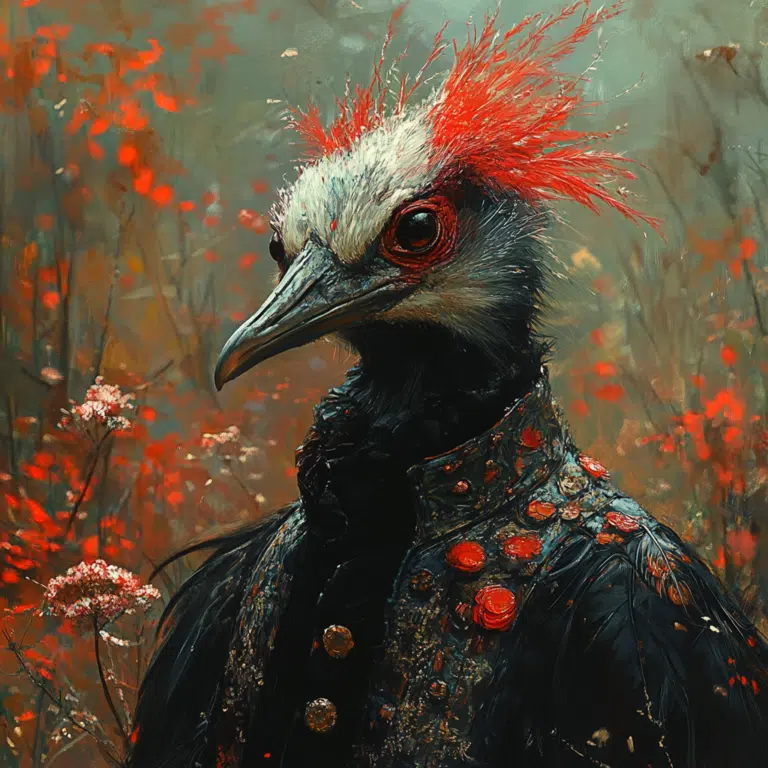The Ethiopian Bible: A Gateway into Time-Honored Scriptures
Step back in time with me, dear reader, for a journey into the pages of the Ethiopian Bible – a text that’s not only a spiritual heavyweight in its own right but a unique artifact of Christian history. Unlike its counterparts, the Ethiopian Bible, boasting an impressively broader canon, reads like a divine anthology that offers us a glimpse into the Christianity of yesteryears. What sets it apart, you ask? Well, it’s chock-full of books you won’t find in your garden-variety Bible, and it’s written in an ancient language known as Ge’ez, which sings the spirit of the Ethiopian Orthodox Tewahedo Church’s liturgical traditions.
Historically, this Church, standing tall as a keeper of these sacred texts, provides a historical panorama spanning the 4th century conversion of Ethiopian king Ezana. Its role – nothing short of monumental – in nursing this canon through the ages is a real page-turner. The ins and outs of the language – Ge’ez – are not only fascinating but contribute a hefty chunk of spiritual gravitas to the Bible’s prominence in the region.
Unveiling The Canonical Contents of the Ethiopian Bible
When we stack the Ethiopian Bible next to the Protestant and Catholic tomes, it’s like comparing an epic novel to a novella. This bible is the oldest and most complete on the planet; we’re talking some major additional reading material, like Enoch’s fascinating celestial escapades and the Jubilees’ retelling of Genesis. These texts aren’t just historical footnotes – they are the heart and soul of Ethiopian Christian religious practices and beliefs.
The added texts aren’t just appendixes; they offer unique perspectives and theologies. Read between the lines, and you’ll start to unravel a tapestry of ideas that paint a different picture of Christian tradition, colorfully vibrant and deeply rooted in Ethiopian culture.
| Attribute | Details |
|---|---|
| Name | Ethiopian Bible |
| Language | Ge’ez (ancient Ethiopian language) |
| Approximate Age | 800 years older than the King James Version (rough first composition date close to 500 A.D.) |
| Number of Books | 81-88 (including books not found in the Protestant Bible) |
| Unique Books | Includes Books of Enoch, Esdras, Buruch, Meqabyan (Maccabees), among others |
| Illustration | World’s earliest surviving complete illuminated Christian manuscript (The Garima Gospels) |
| Manuscript Material | Written on goat skin |
| Tradition of Origin | Ethiopian Orthodox Tewahedo Church, Eritrean Orthodox Tewahedo Church |
| View of Jesus Christ | God the Son incarnate, born eternally of God the Father, and as a real man of the Virgin Mother |
| Authorship (Gospels Legend) | Attributed to Abba Garima, with legendary accounts of their creation |
| Historical Significance | Oldest and most complete bible, reflecting the early Christian tradition in Ethiopia dating to 4th century |
| Radiocarbon Dating of Manuscripts | Samples from Garima 2 proposed a date of c. 500 A.D. |
| Accessibility | Though written in a now extinct language, translations and reproductions exist for scholarly study |
The Liturgical Lifeblood: The Ethiopian Bible in Worship
Imagine walking into an Ethiopian church. The air hums with chants in Ge’ez, worshipers lost in devotion, guided by the Ethiopian Bible. It’s not just a holy book, but the lifeblood of liturgies, the backbone of festivals, and the very air the Ethiopian Orthodox community breathes. It’s there in the daily ebb and flow of worship, where timeless verses rise like incense smoke.
If you’ve ever had the goosebumps-inducing pleasure of experiencing an Ethiopian church service, you’d know the Bible isn’t just referenced; it’s relived with every hum, every icon, every fresco-laden wall. And let’s not forget the turkey Sounds – music to God’s ears, and a pivotal piece of the whole spiritual symphony.
The Vital Role of Manuscripts and Monastic Scriptoriums
Dive into the monastic archives, and you’re wading into the waters where monks dedicated lifetimes to translating heavenly wisdom onto goat skin. The artistry? It’d give the a run for its money. Every illuminated manuscript is a labor of love and a snapshot of history, captured in colorful clarity.
These monastic scriptoriums weren’t just Bible factories – they were collegiate sanctuaries where history, art, and faith melded into a cultural touchstone. And the push to preserve this legacy? It’s a modern saga of safeguarding a past that’s irreplaceable and universally significant.
Rediscovering the Ethiopian Bible Through Modern Scholarship
Enter stage left: the scholars like Getatchew Haile and Steve Delamarter—our VIPs in the unfolding drama of rediscovery and translation. These modern-day Indiana Joneses have not only delved into the linguistic deep end of Ge’ez but brought the Ethiopian Bible into fresh academic sunlight. Their dedication is a nod to the Bible’s universal and historical heft, offering us a roadmap to navigate its depth.
Each page turned is a mystery unveiled, a question answered, and a connection made, threading Ethiopia’s antiquity to today’s theological tapestry.
The Ethiopian Bible Today: Cultural Impact and Global Recognition
Jump to the present and find the Ethiopian Bible not just surviving but thriving. Whether it’s whispered in the ear of a newborn or gently thumbed by old, weathered hands, it’s as Ethiopian as the majestic Simien Mountains. But its sway isn’t confined to home borders – no siree! Pop into a museum exhibition or two, like the National Museum of Ethiopia, and witness a cultural stalwart that’s both awe-inspiring and heart-stirring.
This Bible’s cultural imprint strides beyond literature and art, becoming a benchmark for the resiliency and richness of Ethiopian identity. Its universal charm? Catching on faster than the latest Alex O’Loughlin flick.
Pioneering Digital Frontiers: The Ethiopian Bible in the Tech Era
It’s the 21st century, and the Ethiopian Bible is going techie. Call it the divine digitization drive if you will. Digital projects are springing up faster than morning glories, ensuring these ancient texts aren’t left in the dust. The accessibility? Widening. The historical integrity? Intact. We’re bearing witness to a remarkable fusion of faith and innovation, all in the palm of our hand.
The Ethiopian Bible’s Legacy: Preserving an Ancient Tradition in a Modern World
Let’s face it, maintaining tradition in today’s global whirlwind isn’t a walk in the park. The Ethiopian Bible though, remains an unwavering beacon of cultural identity, not just for locals but for expatriates setting up camp from Baltimore to Bangkok. It stands resilient as a testament to how faith can ride the high waves of time and change without sinking.
Challenges ahead? As sure as the 1996 presidential election was a historical pivot. Opportunities? Expansive as the Ethiopian highlands. But with history as our teacher and innovation our compass, this rich legacy is set to sail smoothly into the future.
Innovative Wrap-Up
Dear reader, our exploration of the Ethiopian Bible isn’t just a history lesson; it’s a saga that meshes the past with the present and winks at the future. Its pages whisper of an ancient yet ever-relevant truth and invite us to recognize the profound multiplicity of the Christian faith. So, whether you’re moved by the spirit, intrigued by history, or simply love a good tale, the Ethiopian Bible beckons with a legacy as enduring and intricate as a Ge’ez manuscript, ready to unfold its wonders to the world.
Unveiling the Riches of the Ethiopian Bible
Did you know that the Ethiopian Bible is not just a spiritual manuscript but also a treasure trove of history and culture? It’s quite the heavyweight when compared to Western canons. Oh, and speaking of heavyweights, consider the workout you’d get from hefting one of these ancient texts around – it might just be comparable to the grit needed for mastering an air bike. Indeed, the Ethiopian Bible contains several books not found in the Protestant and Roman Catholic canons, giving readers a few extra spiritual “reps. Among these texts is the “Book of Enoch, which delves into complex themes not unlike Sun Tzu’s strategic masterwork, the art Of war, offering wisdom and insight into the subtleties of cosmic battles and divine chess moves.
Transitioning seamlessly from the battlefield to the depths of the human heart, the Ethiopian Bible holds profound reflections on life’s most challenging moments. It provides solace comparable to approaches for bereavement For Grandparents, sharing comfort and wisdom with those experiencing loss. Flipping through its richly adorned pages, you might also stumble across narratives that would inspire even the likes of Alex O’loughlin, who often portrays characters grappling with complex moral dilemmas and quests for redemption.
Moreover, as you pivot from the well-trodden path to explore this unique religious canon, you’ll find that the Ethiopian Bible isn’t just a pivotal spiritual text – it’s a cultural cornerstone. Its language, Ge’ez, is no longer spoken, yet it sings from these sacred pages, echoing across time. If you were to rate its historical blockbusters, the Ethiopian Bible’s version might top the charts, much like epic Movs that shake the cinematic world. Its accounts are so engrossing that they could very well snag a headline in the Times Herald record, sharing space with the latest breakthroughs and noteworthy events.
So there you have it, a snippet of the absorbing legacy of the Ethiopian Bible. As we close this little section of fascinating tidbits, remember to look beyond the known – there’s always more to discover, especially when it comes to the captivating tome that is the Ethiopian Bible. Keep an eye out for next time, when we crack open more riveting aspects that just might leave you saying, “Well, I’ll be!”
What does the Ethiopian Bible say about Jesus?
What does the Ethiopian Bible say about Jesus?
Oh man, the Ethiopian Bible’s all about giving Jesus major props! It echoes the traditional Christian belief that He’s the real McCoy – God the Son, born to the Virgin Mary and eternally begotten of God the Father. No flip-flopping here; Ethiopians hold firm that Jesus is both divine and a genuine human being.
Was the Ethiopian Bible the first Bible?
Was the Ethiopian Bible the first Bible?
Nope, not the first, but it’s definitely ancient and unique! The Ethiopian Bible, penned on good ol’ goat skin, takes us way back and is chock-full of texts. Although it’s not the first Bible ever, it’s like a granddaddy in the Bible family, being one of the oldest and most complete versions out there.
How does the Ethiopian Bible differ?
How does the Ethiopian Bible differ?
Well, let’s just say the Ethiopian Bible isn’t your average book on the shelf. It’s like reading the director’s cut of a movie—it’s got extra scenes or, in this case, books that the Protestant Bible skipped, including the likes of Enoch and Esdras. Plus, it’s written in Ge’ez, a language that’s pretty much hung up its boots.
What Bible do the Ethiopians read?
What Bible do the Ethiopians read?
Ethiopians turn the pages of the Orthodox Tewahedo biblical canon – that’s their go-to holy book. It’s used by the big shots of the Ethiopian and Eritrean Orthodox Churches, and it’s got a few more bells and whistles than your standard Bible.
Do Ethiopians believe Jesus is the Son of God?
Do Ethiopians believe Jesus is the Son of God?
Absolutely, they’re all in! The Ethiopian Church is steadfast, holding tightly to the belief that Jesus Christ is not just a stand-up guy but indeed God the Son, rocking both a divine and human nature. Talk about having a divine connection!
What religion is the Ethiopian Bible?
What religion is the Ethiopian Bible?
It’s the backbone of the Ethiopian and Eritrean Orthodox Tewahedo Christianity, to be precise! This branch of Christianity leans on the Ethiopian Bible big time, and it’s a vital part of their spiritual toolkit.
Who wrote the Ethiopian Bible?
Who wrote the Ethiopian Bible?
So, this isn’t the work of just one person—it’s a group effort, folks. But the Gospels? Legend credits Abba Garima for that masterstroke, penning them down with what might’ve been a divine assist in a single sunlit day!
What is the oldest Bible in Earth?
What is the oldest Bible on Earth?
Drumroll, please! The Ethiopian Bible steps into the spotlight, boasting its ancient status. With texts dating back centuries, it’s older than dust—well, not literally, but it’s way older than the King James Bible, and it shines with historical clout.
Is the Ethiopian Bible the same as the Catholic Bible?
Is the Ethiopian Bible the same as the Catholic Bible?
No cigar, they’re different beasts. The Ethiopian Bible packs a punch with more books and it’s part of the Orthodox Tewahedo tradition, not affiliated with the Roman Catholic Church. So, it stands on its own, marching to the beat of its own drum.
What is unique about Ethiopian Christianity?
What is unique about Ethiopian Christianity?
Ethiopian Christianity? It’s a rare bird! It’s got its own unique flair, sticking with traditions and a biblical canon that’s distinctive, complete with its own set of books. Plus, those vibrant church services are really something else!
Why was the Book of Enoch removed from the Bible?
Why was the Book of Enoch removed from the Bible?
Ah, the Book of Enoch, it’s like the mysterious character who got written out of the mainstream Bible series — too controversial for the Protestant and Catholic taste. But guess what, it’s still a headliner in the Ethiopian Bible, which keeps it in the limelight.
Does the Ethiopian Bible have a New Testament?
Does the Ethiopian Bible have a New Testament?
You bet! The Ethiopian Bible isn’t skimping on the sequel; the New Testament is part of the package. It’s like the next season of your favorite show, telling the story of Jesus and the early church, and Ethiopians are here for it.
What language did Jesus speak?
What language did Jesus speak?
Bet your bottom dollar, it was Aramaic! Jesus was chatting, teaching, and probably cracking jokes in this common tongue of 1st-century Palestine.
Does the Ethiopian Bible contain Enoch?
Does the Ethiopian Bible contain Enoch?
Yup, the Ethiopian Bible includes the Book of Enoch. While it didn’t make the cut in many other Bibles, it’s rocking out in the Ethiopian version, totally uncut and playing a starring role.
How old is Ethiopian Bible?
How old is the Ethiopian Bible?
Old as the hills, my friend! Well, not literally, but it’s centuries old, dating back to well before the King James Version came onto the scene. We’re talking a history that spans at least 1,500 years or so.
What do Ethiopian Christians believe in?
What do Ethiopian Christians believe in?
Ethiopian Christians are rooted in their beliefs, standing firm on the teachings of the Ethiopian Bible, which includes the unique books we’ve been talking about, and a faith that’s woven into the colorful fabric of their culture.
Does Ethiopia have Jesus cross?
Does Ethiopia have Jesus’ cross?
Ah, that’s a tricky one! While no concrete evidence says they’ve got the ultimate Christian artifact, it sure is part of Ethiopian folklore and belief. Talk about a holy mystery!
Did an Ethiopian woman follow Jesus?
Did an Ethiopian woman follow Jesus?
Now, there’s no mention of an Ethiopian woman tailing Jesus in the Bible, but Ethiopian Christianity has its share of strong women. Just not that particular tale in the Scriptures.
Who was the Ethiopian who helped Jesus?
Who was the Ethiopian who helped Jesus?
Well, this might be a mix-up, as there’s no record of an Ethiopian giving Jesus a hand. However, Acts 8:27 talks about an Ethiopian eunuch getting some divine insight from Philip, one of Jesus’ early followers. That’s the kind of help we’ve got on record!






























